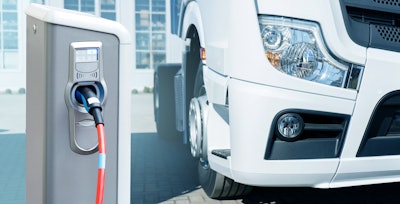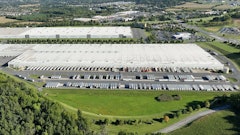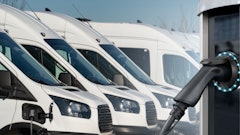
As the world accelerates toward a more sustainable future, the fleet electrification market is on the brink of significant transformation. With an expected growth trajectory from $104.5 billion in 2025 to $231.69 billion by 2034, this market is set to thrive at a remarkable compound annual growth rate (CAGR) of 9.25%, according to data released by Towards Automotive. This expansion is driven by multiple factors, ranging from the increasing demand for sustainable transportation solutions in developing nations to a wave of investment by fleet operators committed to reducing vehicular emissions.
The rise of fleet electrification
Fleet electrification, the transition of municipal, commercial, and corporate vehicle fleets from internal combustion engines (ICE) to electric powertrains, has emerged as a pivotal strategy in addressing the global need for cleaner transportation. This shift not only reduces carbon emissions but also provides fleet operators with long-term cost savings, positioning electric vehicles (EVs) as a viable alternative to traditional vehicles.
The adoption of electric light commercial vehicles (LCVs), electric buses, medium-duty trucks (MDVs), heavy-duty trucks (HDVs), two- and three-wheeler cargo EVs, and off-road specialty fleet vehicles is becoming increasingly widespread. These vehicles are powered by various battery technologies, including lithium iron phosphate (LFP), nickel manganese cobalt (NMC), and nickel cobalt aluminum (NCA), along with newer, more promising solid-state batteries. The expanding variety of vehicles and battery options is making fleet electrification more adaptable to different sectors, from logistics and delivery fleets to public transit and corporate fleets.
In particular, the logistics and delivery segment has emerged as a dominant player, representing around 33% of the market share. Public transit fleets are also showing immense potential, particularly with the growing global trend of electrifying buses and municipal vehicles. As the automotive sector continues to evolve, fleet electrification stands out as a key driver for sustainable mobility.
Government initiatives and investments fuel market growth
Government initiatives play a pivotal role in shaping the future of fleet electrification. Several countries are actively deploying electric buses and incentivizing fleet electrification through subsidies, grants, and tax benefits. For example, the UK government announced an investment of €38 million in April for the deployment of 319 electric buses across England as part of its commitment to reducing air pollution and improving urban air quality.
In addition to government support, strategic investments from private equity firms and automotive giants are accelerating the market's growth. Companies are constantly innovating and providing EV solutions tailored to the needs of fleet operators. These investments, coupled with the increasing number of EV startups in the Asia-Pacific region, are poised to revolutionize the industry. Such investments underscore the growing importance of electrifying commercial fleets to drive sustainability and improve operational efficiency.
Technological advancements shaping the future
One of the major technological trends influencing the fleet electrification market is the development of advanced battery technologies. Lithium iron phosphate (LFP) batteries are currently dominating the market, holding a substantial share of around 40%. However, the future of the market lies in the growth of solid-state batteries, which promise to offer higher energy densities and faster charging times, alongside enhanced safety features.
Equally important is the rise of vehicle-to-grid (V2G) technology, which enables electric vehicles to feed power back into the grid. This technology is set to be a game-changer, allowing fleet operators to not only reduce their dependence on the grid but also create new opportunities for energy generation and storage. As AI-driven fleet management solutions continue to evolve, they will further optimize charging times, maintenance schedules, and overall fleet operations, ensuring that electric fleets are as efficient and cost-effective as possible.
Electrification’s impact across regions
The fleet electrification market is seeing substantial growth across various regions, with Asia Pacific currently holding the largest market share at approximately 38%. This region is expected to remain at the forefront of the market, driven by countries like China, India, and Japan, where government policies, rising environmental concerns, and heavy investments in EV infrastructure are creating favorable conditions for electric vehicle adoption.
North America, particularly the United States, is also poised to witness robust growth, with the highest CAGR expected during the forecast period. In North America, the fleet electrification market is expected to thrive due to the increasing number of fleet owners seeking to reduce operational costs and meet sustainability targets.
Charging infrastructure: A key enabler of fleet electrification
The widespread adoption of electric vehicles is closely tied to the development of EV charging infrastructure. In 2025, the market is expected to see continued growth in the deployment of fast-charging stations, with the DC fast-charging segment leading the market. However, ultra-fast DC charging technologies are anticipated to experience the fastest growth, ensuring that EVs can be recharged quickly, minimizing downtime for fleet operators.
In addition to the fast-charging infrastructure, there is a growing trend toward smart charging solutions, which allow fleet operators to optimize their charging schedules based on factors such as electricity rates and vehicle availability. This advancement is crucial for maximizing the efficiency and cost-effectiveness of fleet operations, particularly in regions with limited access to charging stations.
The road ahead: Challenges and opportunities
While the fleet electrification market holds immense promise, there are several challenges that need to be addressed to ensure its sustained growth. One of the primary hurdles is the high upfront cost of electric vehicles, particularly for large fleets. Although the total cost of ownership is lower due to reduced fuel and maintenance costs, the initial investment remains a significant barrier for many fleet operators.
Furthermore, while charging infrastructure is expanding, there are still regions with inadequate charging networks, which could hinder the widespread adoption of electric fleets. Governments and private companies must work together to ensure that charging stations are accessible and efficiently integrated into the existing transportation ecosystem.
Despite these challenges, the fleet electrification market offers vast opportunities, particularly for startups and established players who can innovate to address the diverse needs of fleet operators. The demand for sustainable and cost-effective transportation solutions is driving significant investment into research and development, ensuring that the market will continue to evolve and thrive in the years to come.
Conclusion
The fleet electrification market is set for a transformational journey over the next decade. As global efforts to reduce carbon emissions intensify, fleet electrification will play a crucial role in reshaping the transportation landscape. Supported by government policies, technological innovations, and strategic investments, the shift to electric fleets is not just a trend—it is a movement towards a cleaner, more sustainable future. With growth expected to continue at a robust pace, the fleet electrification market promises to become a cornerstone of the global transition to sustainable mobility.

















